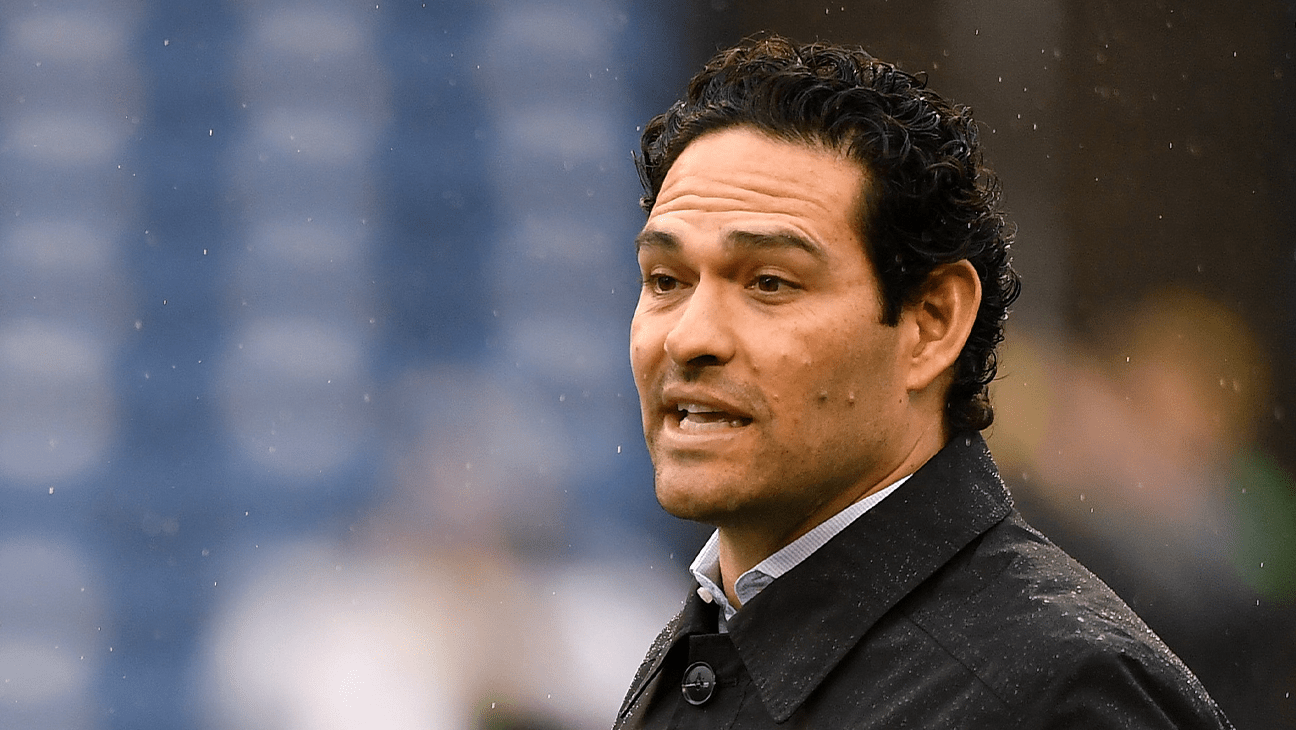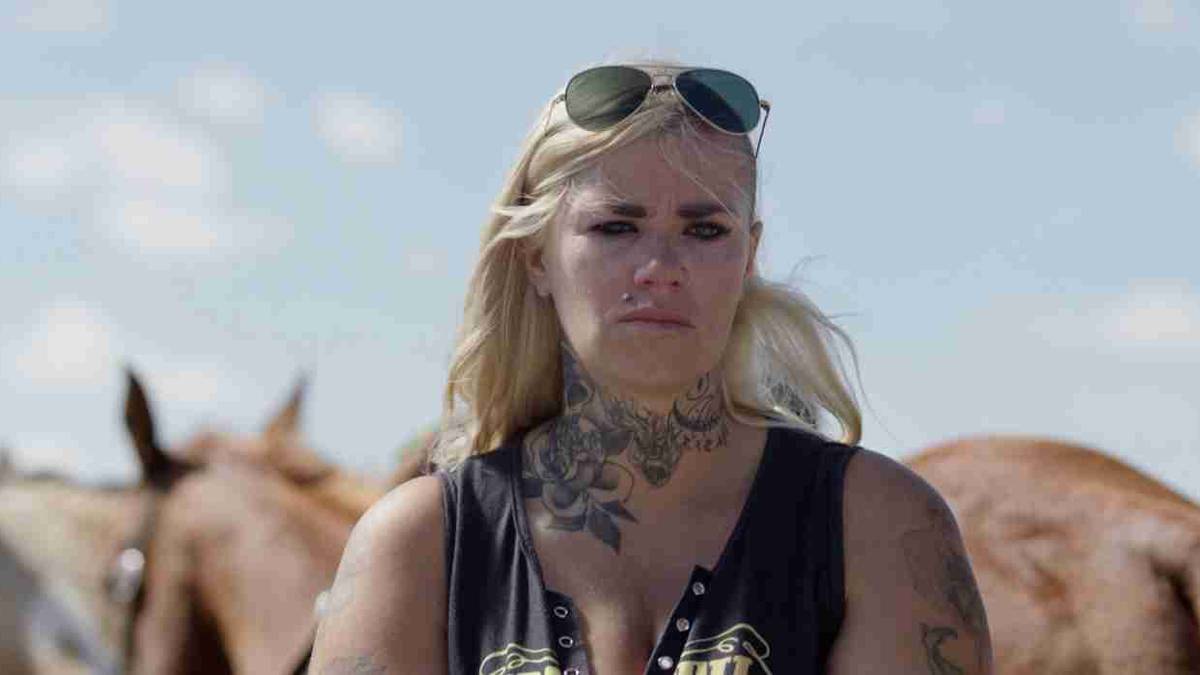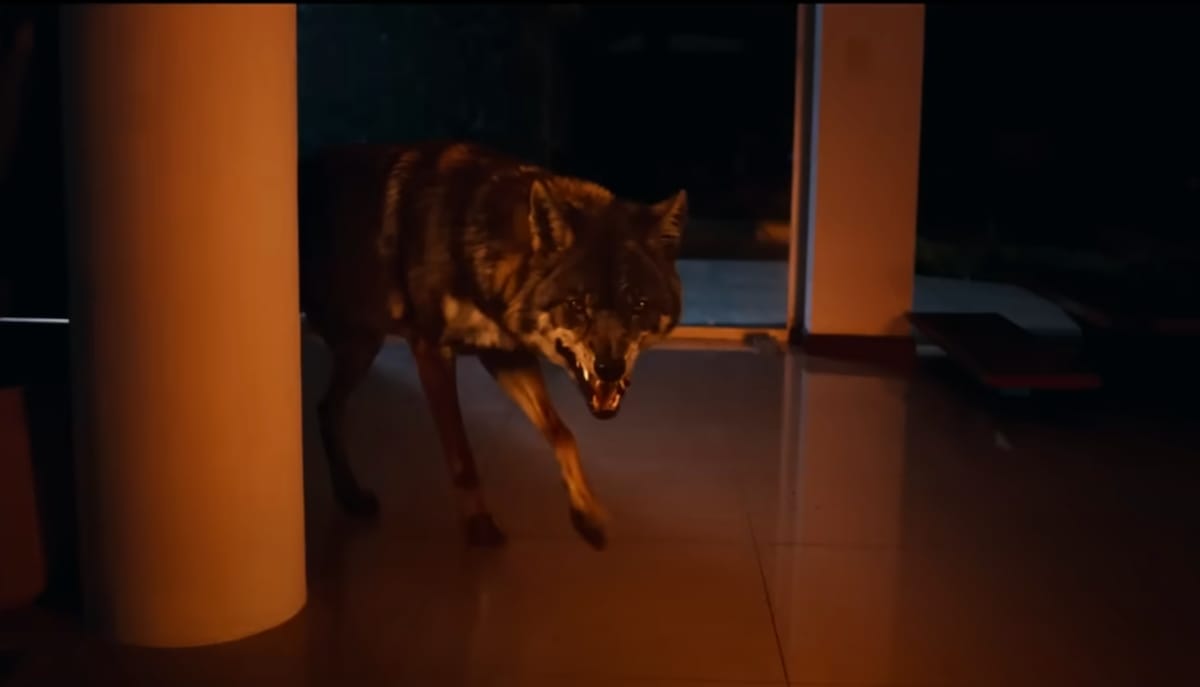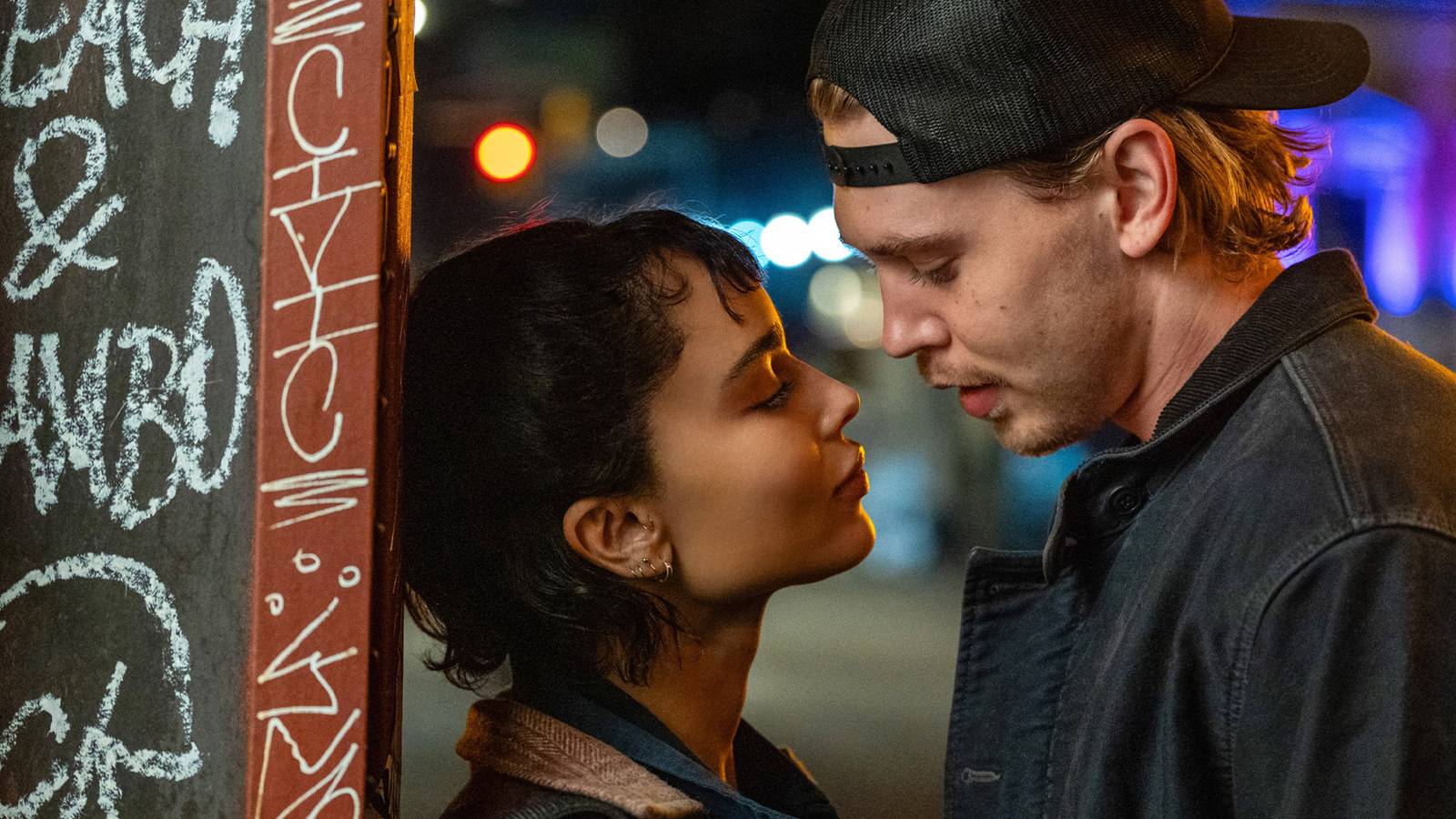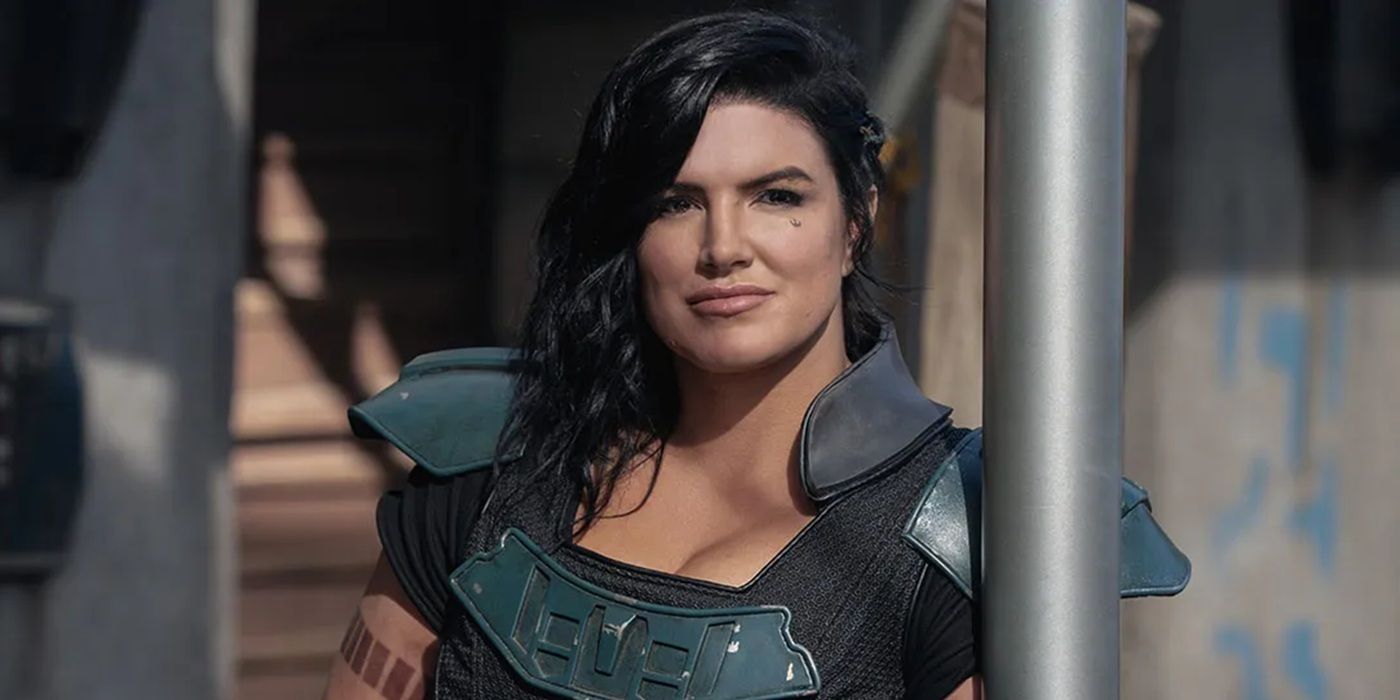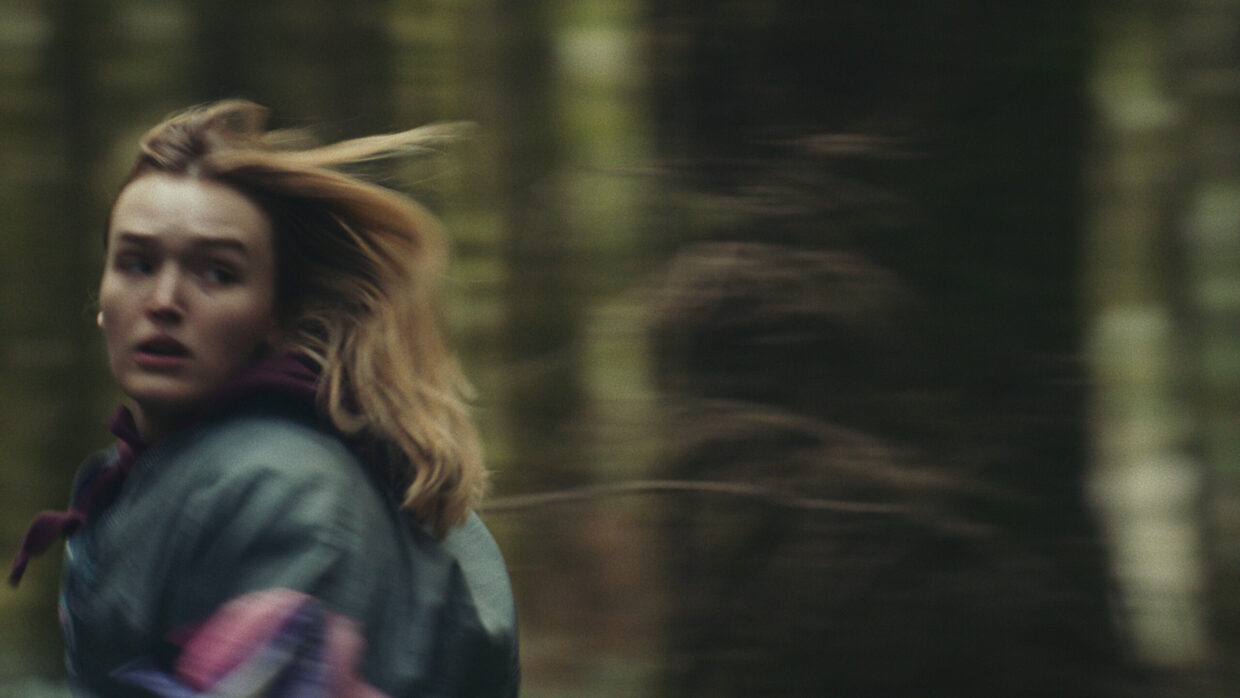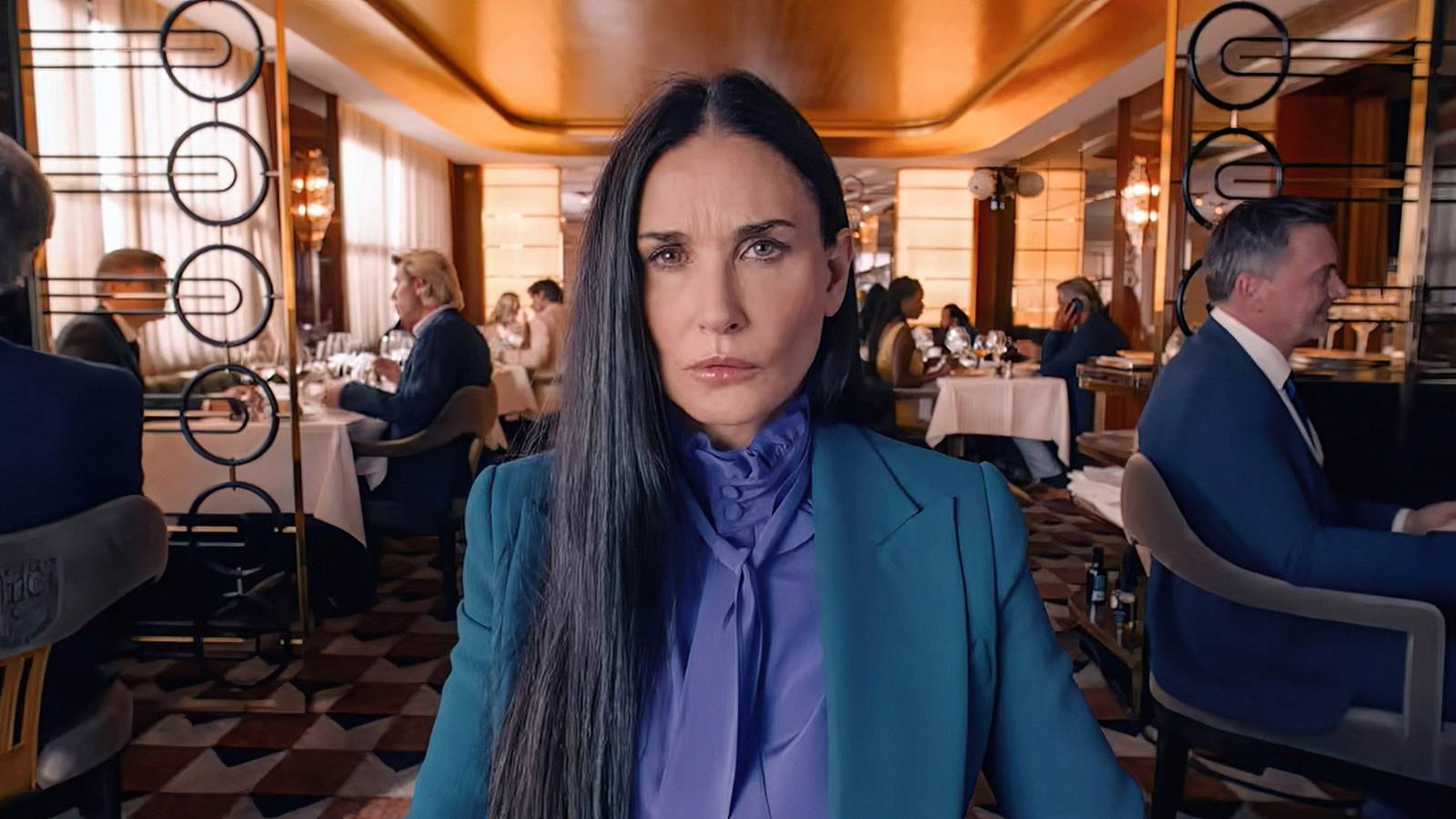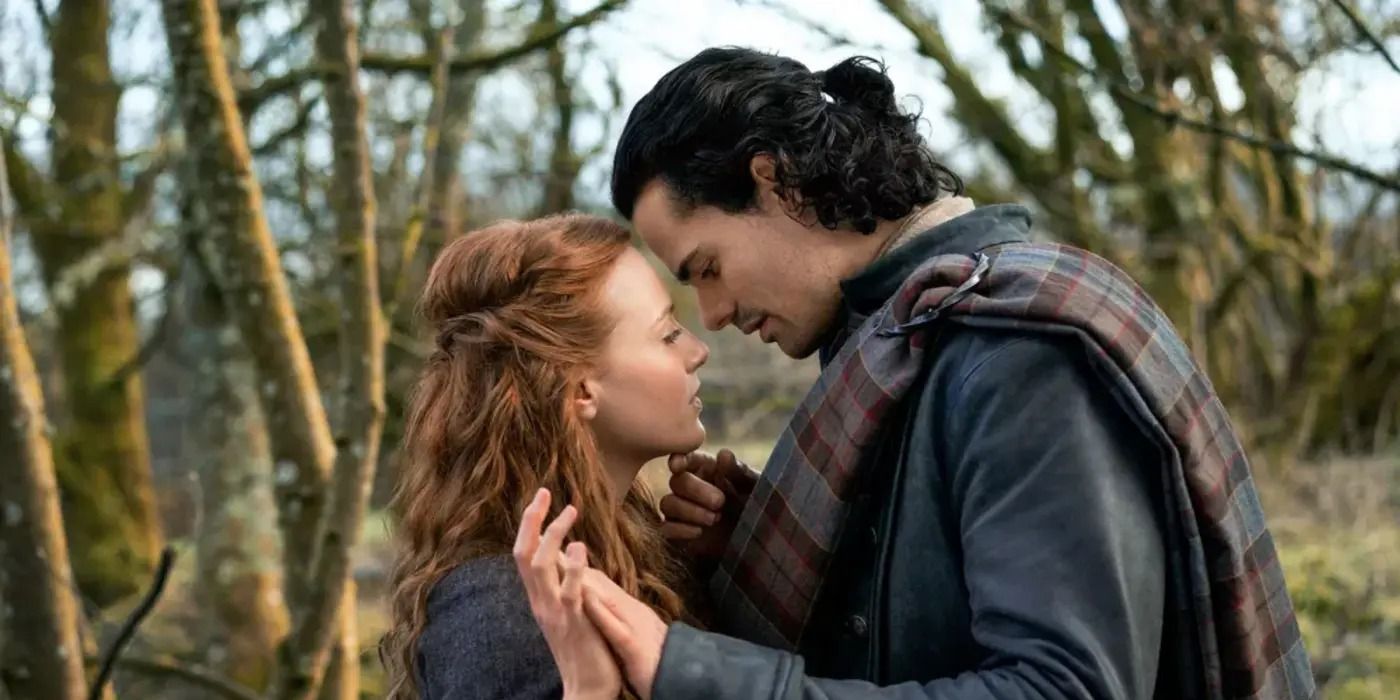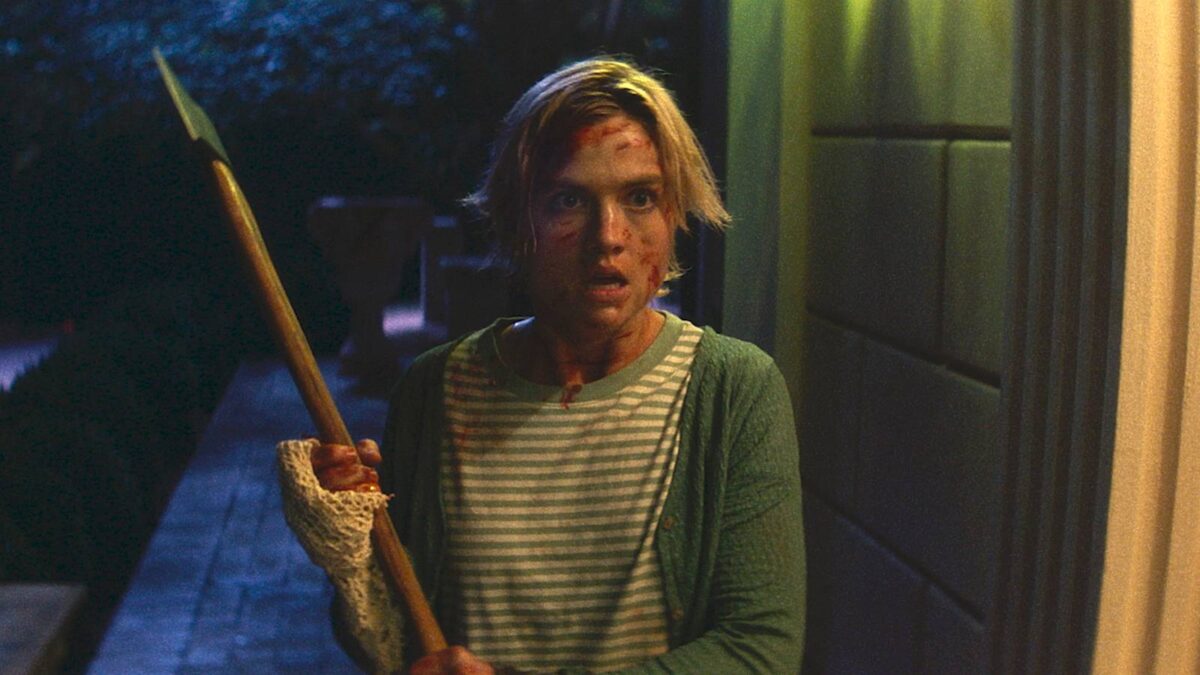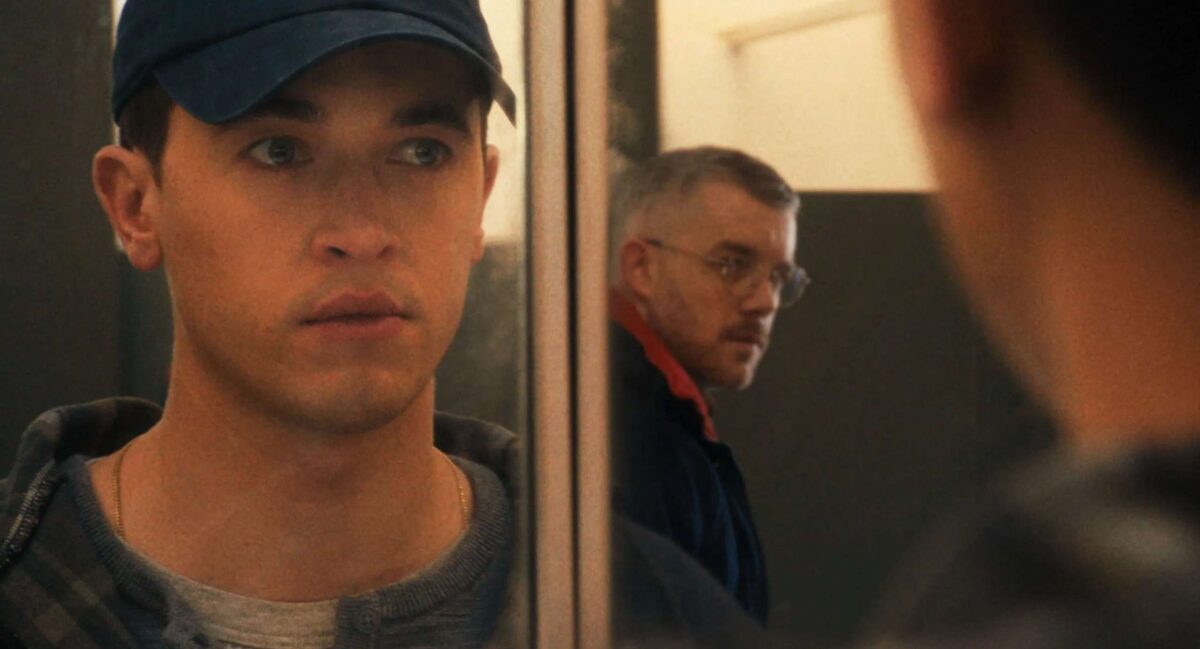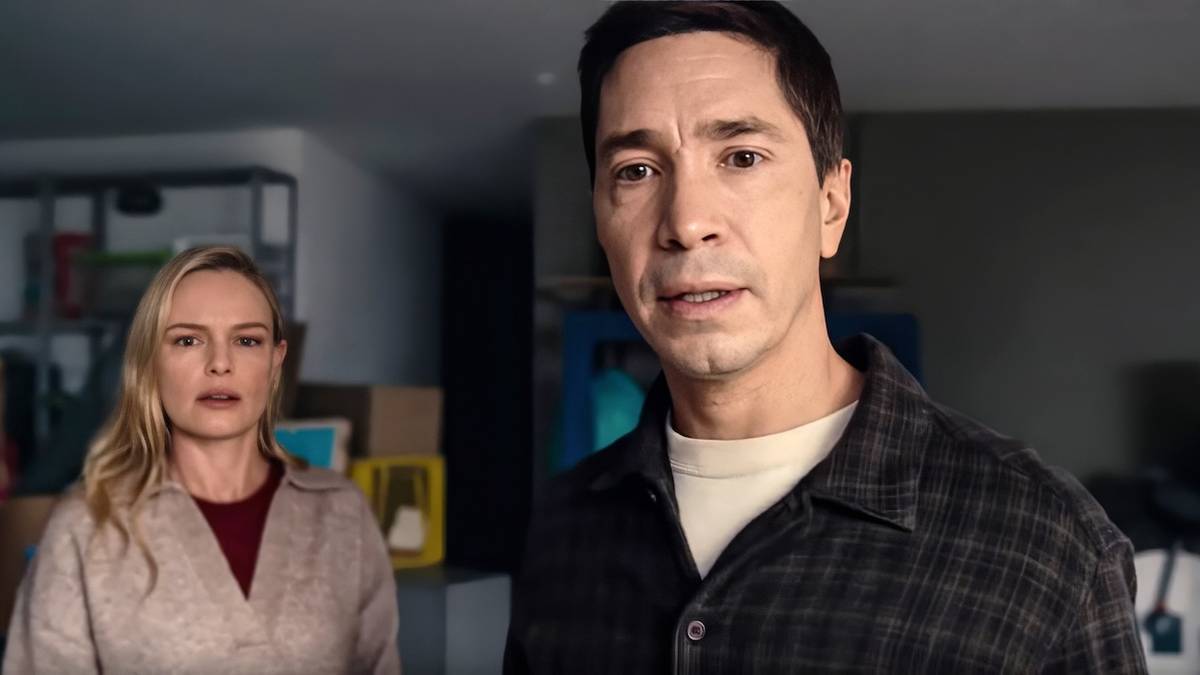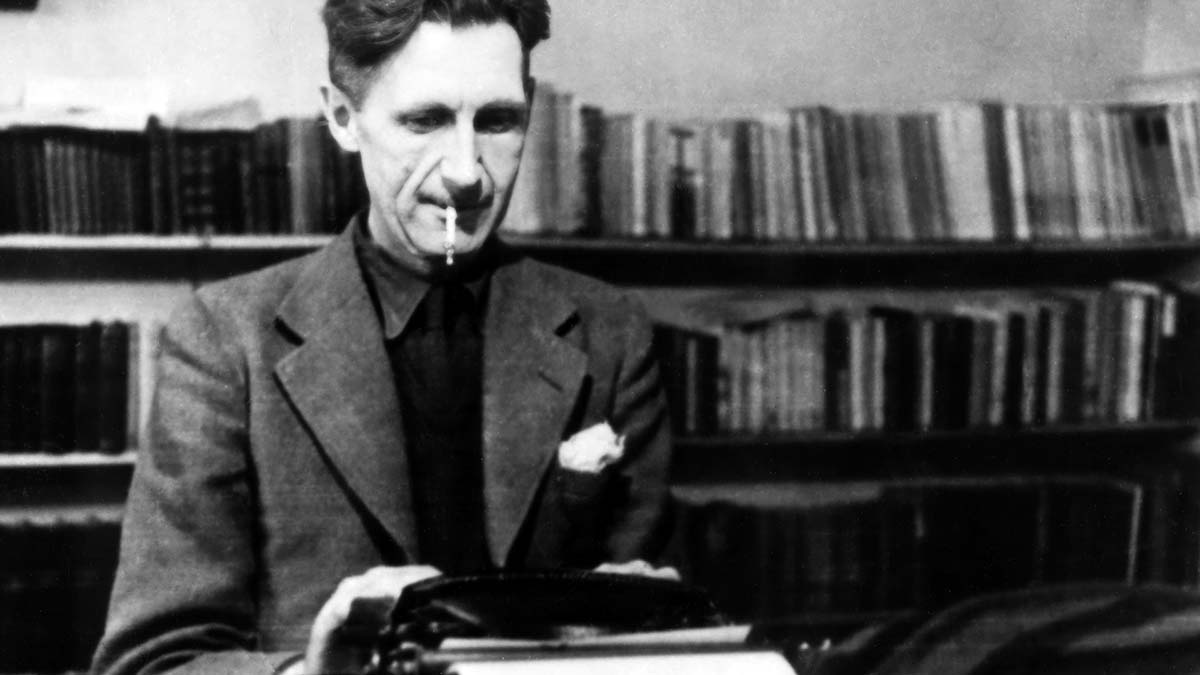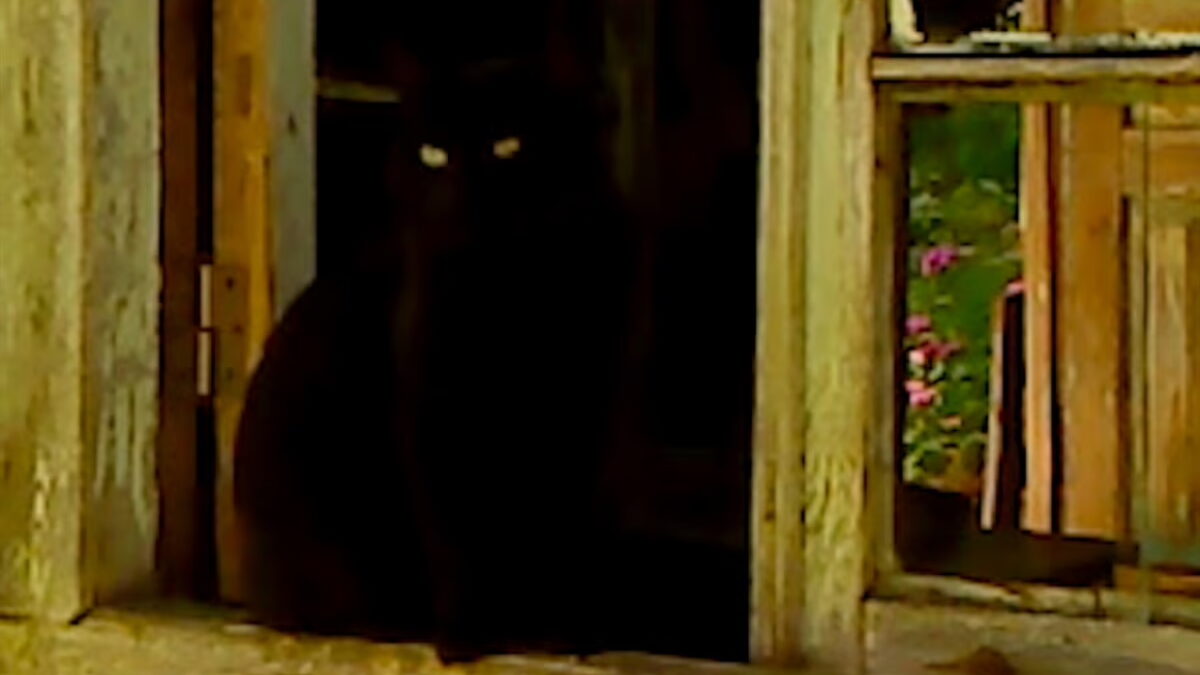
Interview: Alexandre Koberidze on Dry Leaf
Sep 10, 2025
Dry Leaf
Georgian director Alexandre Koberidze’s second feature, What Do We See When We Look at the Sky? (2021), was a sprawling city symphony-like romantic fantasy; at 186 minutes, his third feature Dry Leaf runs a half-hour longer, but doesn’t extended the labyrinthine storytelling techniques of his breakthrough film so much as consolidate its strengths and streamline its magical-realist sensibility. Employing a hybrid approach familiar to his award-winning, similarly lengthy debut, Let the Summer Never Come Again (2017), Koberdize brings the more meditative and conversational qualities of that film to bear on a strikingly straightforward road trip tale that, rather than traffic in big themes or elaborate concepts, simply ponders life’s small wonders and ineffable beauty.
Leaf also takes up Summer’s most memorable trait: its aesthetic. Shot on a Sony Ericsson W595, the same circa 2008 cellphone used for that earlier film, Dry Leaf unfolds in a lo-fi haze, its finer visual details lost in impressionistic images of the natural world that at times resemble paintings more than early digital video. Besides lending the movie a rich, uniquely textured look, it also imbues its plot—in which a middle-aged man named Irakli (played by David Koberidze, the director’s real-life father) searches the villages of rural Georgia for his missing daughter—with a vaguely mystical sense that the film isn’t about locating a lost woman, but finding personal peace in an ever-changing world. With the help of an invisible partner (a not-uncommon Koberidze trope) and a list of abandoned soccer fields his daughter had recently photographed, Irakli sets off across the countryside where he meets a variety of kids and locals who, through their anecdotes and testimonies, speak to a generational sea-change transpiring in the country’s less populated regions. Just as Irakli steadfastly pursues his goal, so too does the film quietly operate by its own logic, pausing between visits to each town for observational passages of the Georgian landscape paired with the magical sounds of Koberidze’s brother Giorgi’s electroacoustic score. The result is a rare narrative film that seems to exist in a state of suspended animation. In Dry Leaf, time isn’t of the essence—it is the essence.
The day before Dry Leaf’s premiere at the Locarno Film Festival, where it won a Special Mention in the International Competition, I sat down with Koberidze to discuss the film’s personal resonances and purposefully modest ambitions. The film has its North American premiere at TIFF this week.
Filmmaker: Variety ran a news item yesterday announcing your next film, which you say in the article will be “a bigger project” than Dry Leaf. I found that funny since people probably assumed that Dry Leaf would be the big followup to What Do We See When We Look at the Sky? What made you want to work on a more modest production scale with this film?
Alexandre Koberidze: Dry Leaf was very small—three of us: me, my dad and my brother, who was doing sound. It’s similar to my first film, in the sense that I shot the film myself, and didn’t arrange anything with anyone—I just did it. I really missed that during the making of What Do We See, which was bigger and had a lot of preparation, and then every decision has to be accepted by different people. You have to explain every change and every decision. While I appreciate both approaches, it’s interesting for me to work in way where you don’t have to talk about things and can just do it. It’s also interesting to talk about things, because then the other person can add something or question something, and sometimes the thing get more interesting. So, when we were working on What Do We See I already thought, “Okay, maybe for the next one I’ll do something smaller,” just to feel this freedom again. But now I have this fantasy of a pattern where I make one bigger film, then one smaller film and change it up every time, at least when it’s possible to.
Filmmaker: And you began writing Dry Leaf directly after What Do We See?
Koberdize: I started to write it before we finished What Do We See. I think we were in post production. It was the pandemic time, so I had all this time where I had to quarantine for two weeks in hotel rooms every time I returned to Georgia. In fact, during my first quarantine, my laptop broke, I had no smartphone and the hotel TV had only a few channels. But I had a pen and paper, so I started to write this thing, and we submitted for funding before the end of 2021. It turned out to be a good time to do it, because, like you said, some people may have been anticipating a bigger film, but doing something smaller may have actually helped during the pandemic, especially because of the format I wanted to shoot in, which otherwise could’ve been problematic.
Filmmaker: So the aesthetic, and the idea to shoot on the Sony Ericsson, was there from the script stage?
Koberdize: Yeah, the idea was to go back to something like my first film. The first idea was to shoot on the phone, and the second was to make it a road movie. The two ideas combined and I went from there.
Filmmaker: Did the writing process differ at all from What Do We See because of this change in scale?
Koberidze: When I was writing, I was thinking about a very different film than it is now. The script was very clear and very linear. I really wanted to make it about this journey, with planned sequences and locations—we go to these seven places, we know which one follows which and what is happening in each place. But shortly before we started to shoot, I lost interest in this. We didn’t really follow this script at all. There’s basically the beginning and part of the ending still there, but the rest is completely unlike what was originally written.
Filmmaker: How did you come to the specific locations and soccer fields? Did you know about them already, or did you discover them along the way?
Koberidze: The script was very clear about where we would go, but, as I said, we forgot about the script at some point, so we were more or less moving as the characters are moving in the film, without really knowing. I had a few places I wanted to go, but just a few, and the rest was done by choosing a region and then asking around about soccer fields when we arrived. In Georgia this kind of travel is easy because it’s small. You can get everywhere, you always have someplace to stay and if you want to sleep at your home, it’s such a small country that at any moment you can say, “Let’s go home.” It’s kind of calming in that sense. So, I really tried not to plan more than two days in advance. It was always like, “Let’s wake up and see where we go.”
Filmmaker: And these are real soccer fields? You didn’t have to intervene, or set up goal posts when you arrived?
Koberidze: They’re real, though of course there was this temptation to just make one. Because sometimes you maybe have a field which was clearly used for soccer, but now it’s gone. I really wanted to see and use what’s actually there. I had the feeling I was bit late with the film, because many of these kind of simple, village kid-made stadiums don’t exist anymore—the beautiful old ones, which I had memories of. In many villages you already have artificial fields made by a municipality or something.
Filmmaker: Was casting your dad as the main character also always part of the project, in the sense that you wanted to make it a family film? Had he done much acting?
Koberidze: He was in the previous film in a smaller part. But I always knew he had this wish. If you point the camera at someone, you sense if the person doesn’t want you to film them, or if they’re comfortable with it, and I always sensed that he was into it. Some years ago, he mentioned that before be began studying Arabic, he had this thought to maybe become an actor, but then for some reason didn’t pursue it. It stayed in my mind that he had this wish, that he had this kind of a joy when performing. And I’m interested in his generation. So, after the format and road movie idea, casting him was the third decision.
Filmmaker: What about his generation interests to you?
Koberidze: My father was born in 1960, and my mom in ’61, so they were around thirty when the Soviet Union collapsed. I think it was then that this generation of people began to really build their lives. Because you are done with your studies, you have your first job, and then everything—everything—is gone. Nothing has any value, even your diploma, and you have to start from zero. I think this was very hard for them. It’s so hard to imagine how you reinvent your life, and adapt to these new rules—it’s like inventing the bicycle. Many young people, including my parents and their friends, had to change their professions, because in the ’90s in Georgia you couldn’t live on a teacher’s, doctor’s or translator’s salary. My father, who was a translator for Arabic language, and his friend, who was a doctor, started a small business. They aren’t business people, but they had to do something. Everyone had to. I have a lot of respect for these people, because it was a big fight for them to go through, and they did it somehow.
Filmmaker: Is this something you communicated to your dad when you approach him about acting in the film? Or is it just something you had in the back of your mind?
Koberidze: No, we didn’t talk about it, but we didn’t have to. I think you see it in their eyes.
Filmmaker: I’m curious about the documentary elements in the film. In most cases, are these real people you met in each village? And as far as the conversations, are you asking them to discuss their own lives, or did you have particular topics or subjects you wanted to touch on?
Koberidze: It’s a mix. When I wrote the screenplay, all the dialogue was scripted. All the stuff at beginning, with the family and police and people in the town, that’s all scripted, because we needed to get the story set up. I thought once we were on the road that I would meet many people, and we would talk to them to see what they bring, but quite soon I got really uncomfortable with this. You know, people are living their lives and you come and try to have them do stuff for you. I was really embarrassed by this approach. I was really struggling, and at some point I said, “Why torture myself if I’m uncomfortable? Let’s find another way.” And the solution was that sometimes, when things happened naturally, I would go with it. But it’s not that we were really looking for these encounters. Sometimes people would come and start talking by themselves, then maybe at some point I would ask, “Can I film you?”
But I also changed things. For example, near the end, I had written in this part where Irakli meets this kid who tells him that there’s no soccer fields around anymore. But I changed it to be an invisible kid, which was calming for me, in that I could say, “Okay, we won’t bother people here; we’ll just do the scene with an invisible kid.” This way I didn’t feel forced to find people everywhere we went. For the invisible characters, I would film my father saying his lines and the rest, the responses, I knew we would do in post production. This idea freed me.
Filmmaker: That’s interesting, because I feel like the natural inclination is to read the invisible characters as symbolic in some way. But it sounds like it was mostly a practical decision.
Koberidze: It’s very practical. Working with actors is definitely not my strong suit. It’s comforting not to have to deal with that side of things. But it was also a kind of challenge: how do you film someone who’s invisible? How do you invent this kind of character? When you start to think about it, it gives you a lot of ideas and opens up a lot of possibilities. How do you represent this kind of character? Well, you can travel with him, like Irakli does, and suggest his presence and movement through sound. But then do you sound design the whole body, or just their footsteps? I decided from the beginning to keep it very simple, and just to rely on the fact that the narrator says that the invisible character is there. But it really opened up a world for me, which I want to continue to explore in the future, maybe by making it more realistic. Because here, the low-res image is always kind of vibrating, creating an illusion of movement. But if I were to shoot this kind of character on a high-res camera, I’d have to find solutions in a stiller image.
Filmmaker: I assume that since you’re not really able to immediately review the footage while shooting with the Sony Ericcson that you’re going back later to look at the framing, the light, and the compositions?
Koberdize: Yeah. There may be one or two things I reshoot, because the light could be better or something. But if it’s not beautiful while I’m filming, it won’t be beautiful when I see it on a laptop. There were some locations that we went back to after a year because the first part of the shoot was in the summer, then I went away to work on other things until we could go back to shoot more in the same place the next summer. This is another possibility this kind of camera gives, because you don’t have to rent it and don’t have to have a team that has to agree to go out and shoot. Because I’ve worked with this camera for such a long time, I think I have a good feeling for what the compositions will look like just looking at the phone. Somehow I know if it’s okay or not so good. It mostly depends mostly on light.
Filmmaker: And this is same phone you shot your first film with, right?
Koberidze: Yeah. Well, the same model, not the exact same phone. I have a few of them.
Filmmaker: I think the film is beautiful, but certainly not beautiful by conventional standards. What interests you about this lo-fi look?
Koberidze: It really started with this feeling you mention, that it’s beautiful. But I originally bought the phone because the person at the store told me it was a good gadget to listen to music on. It’s a Sony Ericsson Walkman; it has a good menu to listen to music. So, that’s why I bought it, but very soon I started to make these images, and while it was obvious that it wasn’t precise, it was also, like, “Wow, it’s so beautiful.” The videos are beautiful, but so are the still photographs, which I also make a lot of. I’m really interested it printing some of them.
Filmmaker: You mean photos you took on set, or just everyday images?
Koberidze: Both. I’ve been using the camera since 2009. I don’t bring it with me all the time anymore, but I had it with me all the time for maybe ten or 11 years. Everyday I was taking pictures, so I have a huge collection.
Filmmaker: I really like the scene at the community center where the owner says they used to show movies. Is that a person and a place you just discovered in that village?
Koberidze: This was a coincidence, and one of those moments when I had a feeling that we could shoot with this person, because he was clearly not uncomfortable. In fact, he was happy to talk. This is a small village in northwest Georgia, where our family comes from—my father’s grandfather lived there before he got arrested in 1937, after which the family left. So, even still, in this village you have two surnames, and half of the village has the same surname as us. We have a small piece of land there, so sometimes we go back. But there aren’t so many people in this village anymore—it gets emptier and emptier. So, when we stumbled across this man, we said hello and asked him about himself. He’s just trying to do something with this old community center. There’s a sadness to it. My father told me that he remembers seeing films in this village as a kid. There was a small cinema at the time, and now it’s just completely empty for half the year. In warmer times there are old people, and maybe their grandchildren come in for vacations. But when we arrived this guy was renovating the community center, and also renovating a little place in front of his home where he wanted to make a small restaurant. I don’t know if it worked out, but he had this energy and urge to do something.
Filmmaker: What can you tell me about the statue we see in that scene? It’s in the background for a while, but then you cut to a closeup of it. It reminded me of the soccer statue at the beginning of the film.
Koberidze: Those images connect in my head, too, but I didn’t think about it at the time. As I said, half of this village has the same surname as me, and the guy in the statue is maybe the most famous Koberidze—maybe not the most famous, because there was an actor who was very beloved, but this guy was a general in the Second World War. He was so important that they made a statue for him. He was from this small village.
Filmmaker: So the statue just happened to be at the community center?
Koberidze: A long time ago, maybe during Soviet times, it was in the center of the village. But at some point they took it away, and now it’s kind of abandoned. I don’t think they know what to do with all these old statues.
Filmmaker: Would you say that thematically the movie is something of a reflection on this process of change and development, or on the history of the landscape and what it’s become?
Koberidze: I think so. I had the feeling while exploring the countryside that things are not as they were. In every village we went to, someone would say, “Yeah, the kids used to play soccer there ten years or twenty years ago, but now there are no kids.” We’d constantly hear these kind of stories, though occasionally we’d come across someone tending to a field or something, which means perhaps there is still some life left.
Filmmaker: Did you guys play any soccer along the way with some of the kids?
Koberidze: I would. We had a ball with us. But my father and brother are not into it, so I was usually the only one. We had a small budget, but we paid everyone who is in the film. You can’t pay kids, so we would talk with their parents and pay them a little bit. But we wanted to give the kids something, too, so we would usually give them a ball. The parents can promise to buy the kids something with the money, but it’s not like receiving something in the moment. So, it was nice to give them a new ball.
Filmmaker: You’ve mentioned to me that your grandmother was an influence on the fairytale-like storytelling of What Do We See. Did you draw on anything personal for the story of Dry Leaf, or did other things inspire it?
Koberidze: At one point in the film Irakli says that he wants to visit his uncle. That’s my father’s uncle. We went there. We asked him to tell us some old stories—there’s just a little bit of it in the film, but I have maybe two hours of his memories recorded. And while my grandma is not in the film, sometimes I’ll go to her and she will start telling old stories about how they used to live back then, when she was a little girl in this village. I’m always amazed by the differences. If I can name something that was a really big inspiration for me for this film, it’s a book called Platero and I by Juan Ramón Jiménez. It’s a collection of episodes about a guy and his donkey. When I was trying to imagine what the mood of the film should be, I would reread this book to find a rhythm, style or a feeling that I wanted to evoke.
Filmmaker: Can you talk about working with your brother on the music for this film? Was the process very different from how he worked on the score for What Do We See?
Koberidze: It was very different. I didn’t say anything to him about it, but he was there recording sound this time, so he experienced the whole journey. And he was working on music when we were traveling, but not for the film—for his album, which was released just few weeks ago. It’s a 70-minute piece ideally played in dark cinema halls.
When I started to edit I asked him to hear the album, because for me it’s good to have something to listen to and work with while editing. I figured I’d just use this music to edit to, then have him make something else. But it appeared that this material I shot and this music he recorded somehow resonated, maybe because he was really thinking about it and making it while we were traveling, and slowly the music from this album became part of the film. For me it was a big inspiration. I think it really gave a character to the film. It’s maybe 70% from this album, plus pieces he later re-wrote for certain scenes. The album is called Forests, Tales, Cities, Forests—so even the title has details which resonate with the film.
Filmmaker: Speaking of titles, when did you come to the title Dry Leaf?
Koberidze: A while ago. I actually wanted to use this title for my previous film. At some point I felt like it didn’t really match, but I really liked the title, so I thought, “Maybe I’ll use it for my next film.”
Filmmaker: And a “dry leaf” kick is a Brazilian term?
Koberidze: Yeah, from the ’50s, but people still use it today. Ronaldo used it a lot, for example.
Filmmaker: Dry Leaf feels like a decidedly optimistic work about appreciating the small things in life, which is not something you get a lot of in contemporary art cinema. How conscious were of making an optimistic film in such dark times?
Koberidze: We started to shoot a few months after the war in Ukraine started, and we were also shooting when October 7 happened. I was really lost, not knowing what to do or how to shoot. I even thought of postponing, or not shooting at all, because I had no knowledge of how to shoot when these kind of things are happening. But I thought, “Let’s do it, and we’ll see.” That’s why I think I abandoned this plan of shooting the film as scripted, or as planned, and instead just followed the emotion. Maybe it ended up as a film about looking for something that gives you some reason to go on. Because you open your phone and look at the news and it’s like, “What should we do?” I think everyone felt really lost, not really knowing how and why to live. I think this is the feeling we had during the making of the film, and maybe that’s what resonates. On the one hand, it’s a deep sadness, and on another, it’s a desperate search for a reason to wake up.
Publisher: Source link
Erotic Horror Is Long On Innuendo, Short On Climax As It Fails To Deliver On A Promising Premise
Picture this: you splurge on a stunning estate on AirBnB for a romantic weekend with your long-time partner, only for another couple to show up having done the same, on a different app. With the hosts not responding to messages…
Oct 8, 2025
Desire, Duty, and Deception Collide
Carmen Emmi’s Plainclothes is an evocative, bruising romantic thriller that takes place in the shadowy underbelly of 1990s New York, where personal identity collides with institutional control. More than just a story about police work, the film is a taut…
Oct 8, 2025
Real-Life Couple Justin Long and Kate Bosworth Have Tons of Fun in a Creature Feature That Plays It Too Safe
In 2022, Justin Long and Kate Bosworth teamed up for the horror comedy House of Darkness. A year later, the actors got married and are now parents, so it's fun to see them working together again for another outing in…
Oct 6, 2025
Raoul Peck’s Everything Bagel Documentary Puts Too Much In the Author’s Mouth [TIFF]
Everyone has their own George Orwell and tends to think everyone else gets him wrong. As such, making a sprawling quasi-biographical documentary like “Orwell: 2+2=5” is a brave effort bound to exasperate people across the political spectrum. Even so, Raoul…
Oct 6, 2025
